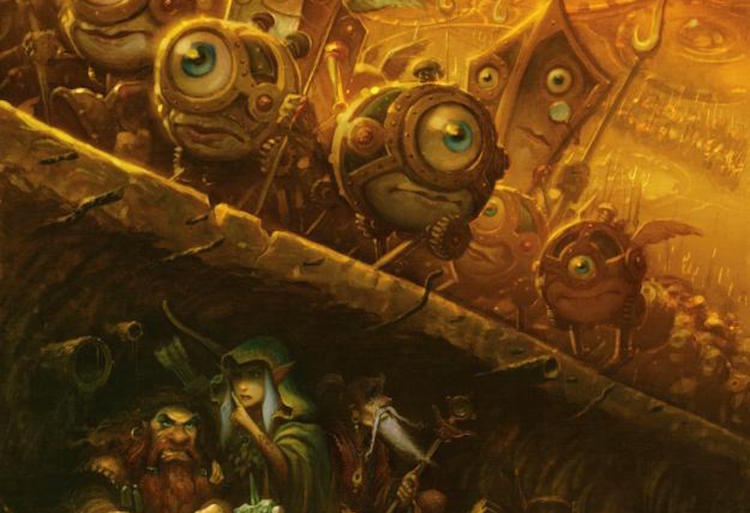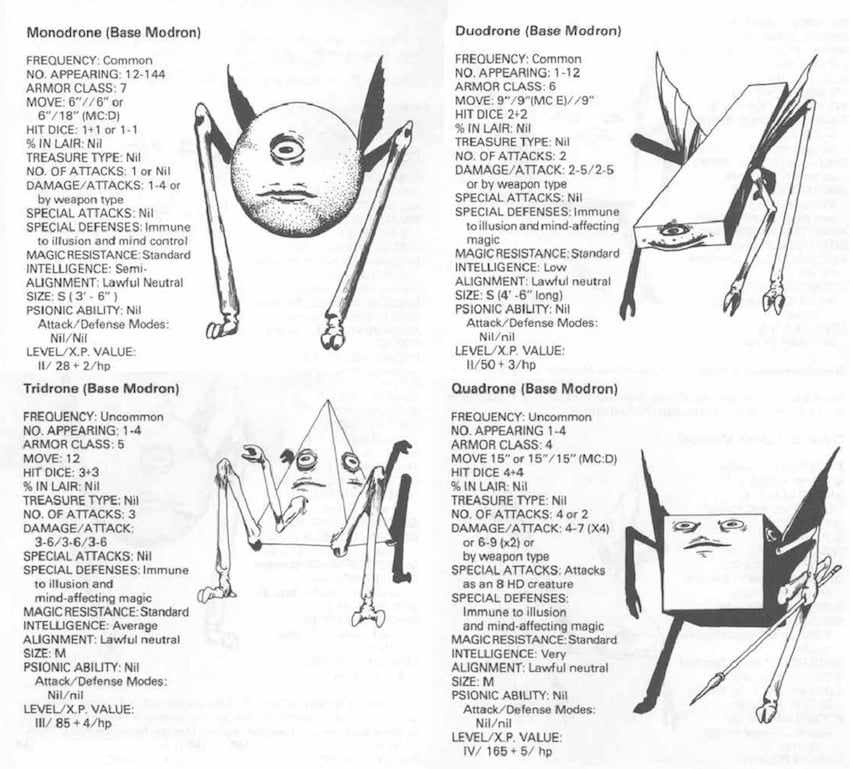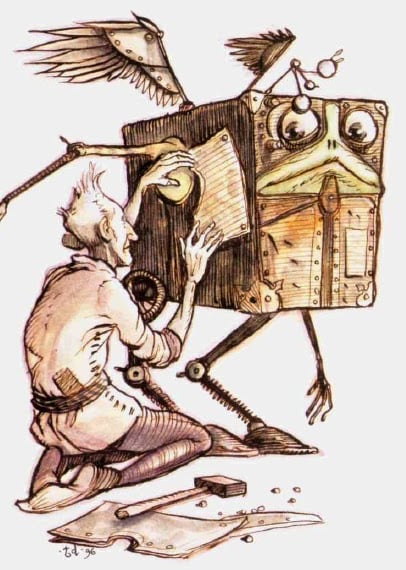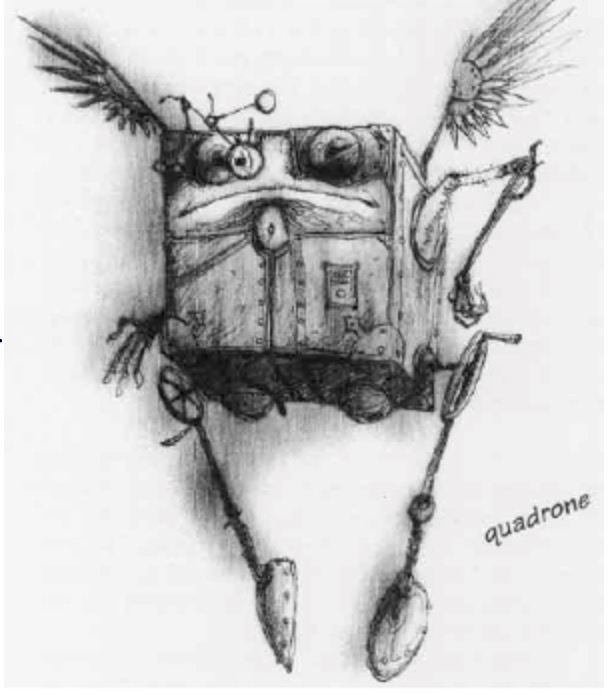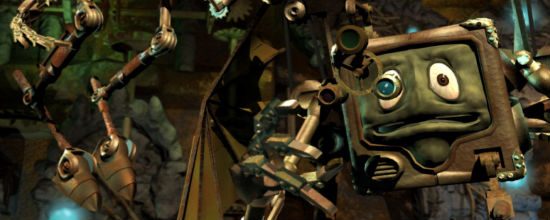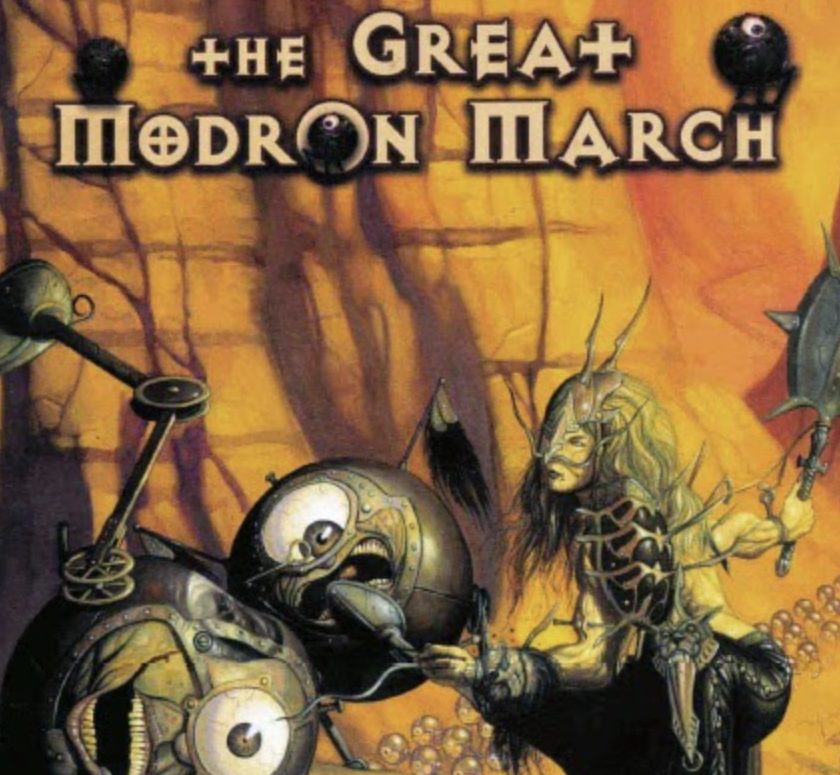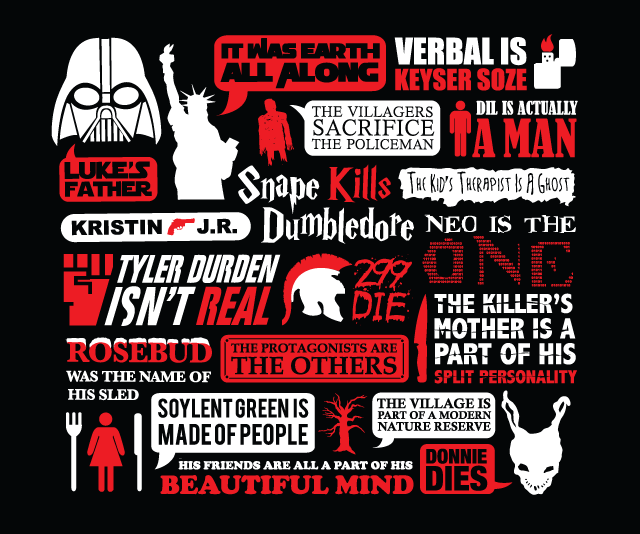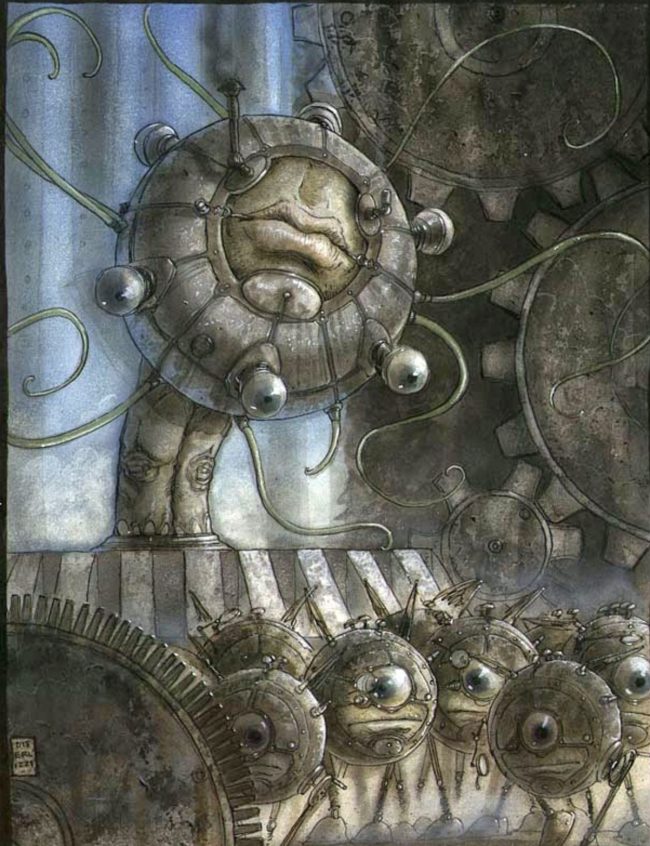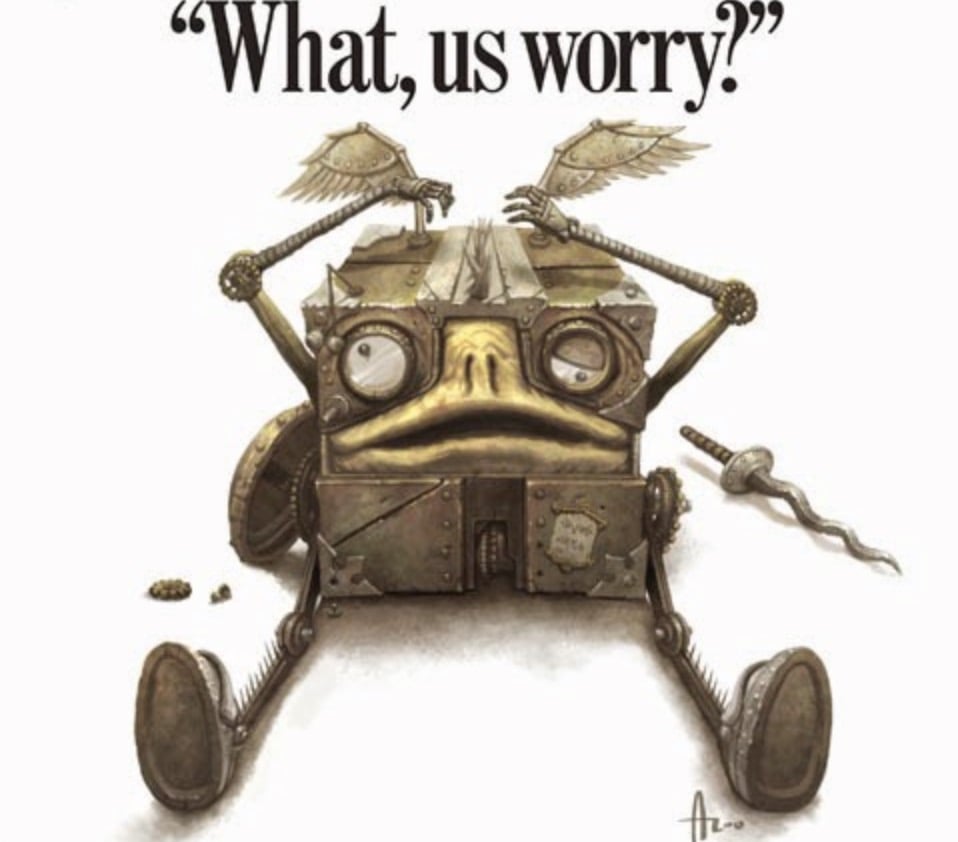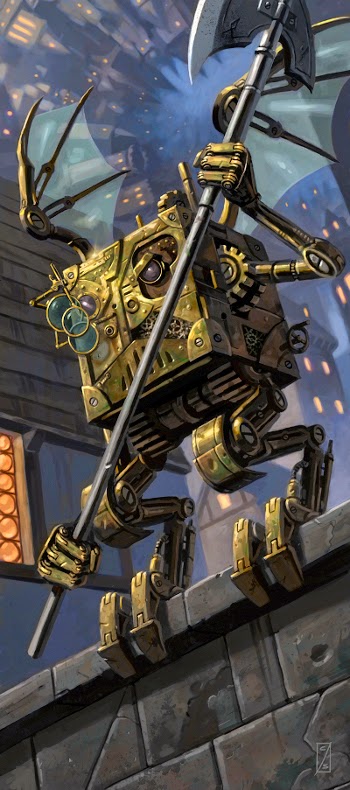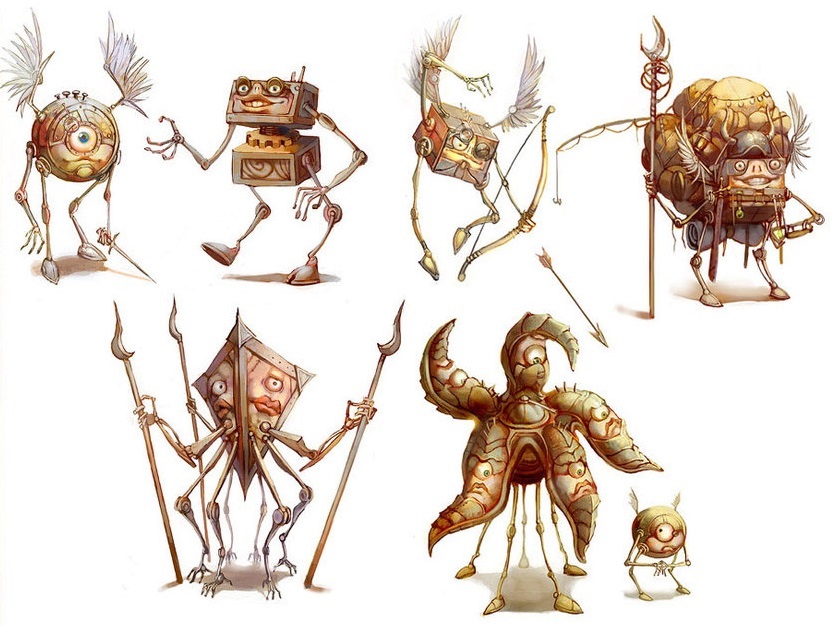Monster Spotlight – Modrons


Everything’s working like clockwork as we gear up to talk about Modrons…
That’s right, this week we’re talking about everyone’s favorite mechanical marvels, those miniature makers who march mindlessly and maintain moderation throughout the clockwork plane of Mechanus. From mini-monodrones through powerful pentadrones, these cogged creations are sure to enjoy their time in the spotlight.
Modrons are extraplanar clockwork creatures that hail from Mechanus, a mechanical plane all about order. They have been a part of D&D for a long time, and have managed to go from weird little side-quest monster to indie darling over the course of the editions. There’s a lot of love for Modrons out there–mostly due to Planescape, which took them from weird shape monsters and made them into weird mechanical/magical monsters, with a well-regulated society that actually had a function in the grand scheme of things. Purpose and meaning–two great levers for DMs to use to situate them in their own games, and from the traits of their mechanical personalities, something for players to latch onto with excitement.
As for me, I love the mixture of whimsy and realism. These are cute little clockwork monsters who are expected to exist alongside heroic knights and dragons–I love that the game gives them just as much of a place as it does Death Knights and Liches. It’s a reminder of the wonderful spectrum of D&D (and many RPGs in general, but there’s something very “D&D” about all of this).
They’re never presented as something ultra gritty or serious (well, that’s not entirely true), but they are still taken seriously enough in their own context. They’re not treated as “just a joke” and written off. Very few things in D&D are–even the Flumph, which has a rule called Prone Deficiency that makes it unable to flip itself over half the time if it falls down–even that is given its place in the world. And I think it’s in this spectrum that D&D grabs hold of you and makes you excited to play. But enough of what Modrons represent in broad terms, let’s take a look at why they’re so amazing.
“Run that by me one more time?” “Okay, so, it’s basically a cube. But, like, with a face. And then give it arms and legs. And a spear. And wings.”
Modrons originated in the Monster Manual II for 1st Edition D&D, where they are attributed to François Marcela-Froideval, who is said to have been working using inspiration from Gary Gygax and everyone’s favorite piece of two-dimensional social satire, Flatland (which I think should be required reading for any well-rounded individual).
Their first appearance has very little mechanistry to it. They live on the plane of Nirvana, a plane of pure law and order governed by Lennie Briscoe, Jack McCoy, and Primus, who created the Modrons in the first place. There’s a lot of what they do and how they do it, but very little in the way of why at this juncture. For instance, if you had the MMII, you’d find out that Modrons have a very strict heirarchical society, you’d get to see some of the higher tier Modrons and know that all Modrons are immune to illusion and mind-affecting magic like Charm Person. Or you’d know that Monodrones are the weakest, that Quadrones function independently, and that Pentadrones are the “enforcers,” but in these early days that was it. They were easy to write off.
That all changes in 2nd Edition. Specifically with Planescape. That setting embraced everything weird and wonderful about D&D and explored it to see how creatively you could take a look at the ideas you’d find in fantasy. It was a whole new way of presenting RPG books. Famed D&D artist Tony Diterlizzi was given the Modrons and made them more appealing. In his own words,
“The re-thinking of how a hackneyed or contrived character looks was a very big lesson for me.“
Advertisement
This comes from an interview in Dragon #354, which also features an ecology article on Modrons, but more in that in a moment. Planescape breathed life into the Modrons. It took them from the kind of bland shape guys you see up there, and gave them personality. Take a look at the Quadrone up there, or this Monodrone.
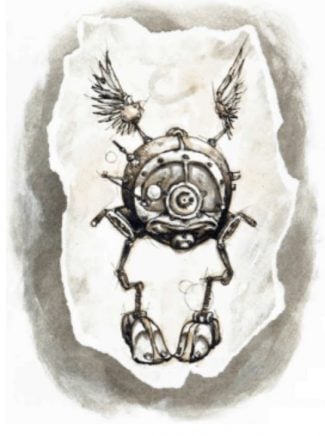
They’re full of character. You can much more easily imagine how they’d all work together as a society. And the campaign setting itself did a great job of fleshing that out for you. Modrons were now native to the clockwork plane of Mechanus (not Nirvana), and there they patrolled and kept their home in order. Their society went from “we have rigid hierarchies” to “we’re alien, almost impossible to understand, and well-ordered.” Concepts like, Modrons are only aware of those immediately above or below them in the caste system–with higher beings as unknowable mysteries, and lower beings beneath their consideration.
For instance, a Tridrone would know that Quadrones exist, and have an understanding of Duodrones functions, but it wouldn’t really consider the existence of Monodrones, nor would it even be able to conceive of Pentadrones. To them the most perfect beings would be Quadrones, so if a Tridrone were to come across, say, one of the Modrone Hierarchs, they’d be literally unable to describe what they’d seen.
Each Modron’s place in society gained a little purpose. There were judges and patrollers, and bureaucrats–the rules for society migration were given as well. Modrons could be promoted, rising to fill the gaps in the hierarchy. The process through which a Modron would be selected was based in alien knowledge–but the effects were rather dramatic. They were transfigured into a new Modron. If our Tridrone were promoted, for instance, it’d become a Quadrone with all the knowledge and abilities thereof.
Which ordinarily isn’t that big a deal, except that Modron society is highly bureaucratic, and an adventurer might need to deal with a particular Modron, only to find that it no longer holds the same position that it once did–but that the adventurers are still required to carry out their tasks. There’s a line in the entry about heroes using paintbrushes to mark Modrons so they’ll be more easily distinguished that sticks with me to this day. Something as small as that is enough to give you a broader picture of their place in the world.
Additionally, their powers changed a little. Though they are for the most part identical to their 1st Edition ancestors, some of the more powerful hierarchs and the like gained a number of at-will abilities which could help them lead the Modron armies to glory.
The idea of Rogue Modrons gets expanded on a little as well–in 1st Edition they are just sort of anti-Modrons who get all violent. But in Planescape, Modrons that go Rogue have lost their connection to the hivemind-ish society they’re all a part of. Sometimes they go insane, sometimes they develop weird “individual” personalities.
And sometimes…sometimes they steal our hearts.
Nordom and Fall-from-Grace are my OTP.
I am talking, of course, about Nordom, the semi-secret companion who appears in Planescape: Torment, aka one of the best CRPGs of all time. Voiced by none other than Dan Castellanetta, Nordom is equal parts inquisitive, naive, and perceptive. His understanding of the world gives an insight into what it’s like to be a Modron and to be cut off–the main character, the Nameless One describes him as a “backwards Modron,” which then prompts him to get his name.
Planescape Torment revitalized and reimagined what a D&D story looked like, and it shows in the adventures that followed.
Speaking of… there’s one last bit of foundational 2nd Edition goodness for Modrons. The classic module: The Great Modron March.
This is a fantastic adventure. Just look at how horrified some of those Modrons look–and with good reason. In this adventure, we find out that there is an event called the Modron March that happen like, well, Clockwork every 289 years. The March is when millions of Modrons march through the outer planes, trampling all in their wake. Most extraplanar folk set their watch by it, and can get out of the way and prepare for the oncoming micromachines march. In this adventure, though, it comes early.
It turns out Orcus–well Orcus’ undead shade, Tenebrous (look it was a weird time, okay, don’t ask), killed Primus and took over instead. This throws the Modrons in disarray and the whole adventure is about figuring out why the march is happening and what the heck do do about it.
You should check out this adventure if you can. It’s pretty great, and it sets up some lasting repercussions for the later editions.
3rd Edition Modrons actually faded into the background for a while. In their place on the big Axiomatic planes were Formians and Inevitables. The Formians stepped in to fill the role of “caste-based society of order,” while Inevitables were decidedly clockwork constructs devoted to doing justice. Of a sort. Usually stabbing someone who probably deserves it.
But, it’s just hard to keep the little guys down, and Modrons returned in a big way in Dragon #354.
There you got a glimpse of what was going on behind the scenes. When Tenebrous took over Modrons, he corrupted one of the Secunduses Secundi Secundians ONE OF THE HIGH OVERSEER MODRONS, who took with it a huge swath of Modrons which left them in a weakened state, vulnerable to expansion by the Formians and Inevitables.
So now you have a whole society of Rogue Modrons (hey PC races wooo) and regular Modrons trying to recover. There’s a lot more detailed in the web-expansion material that accompanied the Manual of the Planes, which you can still download right here.
But even with the transition to the 3.x framework, Modrons didn’t change that much in terms of function or rules. A lot of their resistances got folded into the Living Construct rules, which made them immune to a few more things than they had been before, but much like the Owlbear, Modrons don’t really differentiate mechanically throughout the editions–which is why I like them. You can see how important something like flavor is to the particular way a monster fits into a game real clearly here.
Then there are the 4th Edition Modrons. They are clearly the grittiest Modrons out there–they look much more like robots. Their friendly eyes and mouths are gone–replaced with grating and lenses suggestive of a face. It’s weird to me–but, I have to say I do like how they functioned mechanically. In 4th, they were a little higher level than normal, clocking in at 8th level threats, but even so their hierarchy got worked into their entries. Monodrones were 1hp minions (as they rightly should be), and the others all had different modes of attack–and could apparently assemble a giant mecha-modron (although sadly, there were never stats for this, to my knowledge). Though, one can always dream. And houserule them into the current edition.
Obviously the one in the top right is the best. Obviously. Followed closely by the Monodrone getting a stern talking to…I know the feeling buddy.
5th Edition Modrons seem to have the right balance. They return to their Planescape roots, with a lot of the old design and themes coming back into the forefront. Their society is the defining part of their entry–they’re all servants of Primus (who also made the control stones for the Slaad! Fun fact!) with networked minds that help them carry out their function of increasing order in the multiverse.
There’s a note in their entry:
“Every 289 years, the entire multiverse goes mad. Like clockwork.”
Which is pretty clearly a direct reference to the Great Modron March. They all scale in power pretty orderly, and they all disintegrate whenever they die, for some reason. Poor guys.
At any rate, Modrons have been a part of D&D for a long while, and it’s easy to see why their popularity endures. They’re easy to fit in wherever you need them, they always add a bit of quirkiness to whatever you’re trying to accomplish, but in great numbers, they can be a dire threat.
At any rate, thanks for reading this far. Let me leave you with this:
Morte: Hey Nordom, knock-knock.
Nordom: Why do you persist in addressing me as a door?
Morte: It’s a joke, you stupid polygon! You’re supposed to answer “Who’s there?”
Nordom: I know who is there. It is you. Why would I ask a question when I already know the answer?
Morte: Just forget it.
Happy adventuring!


